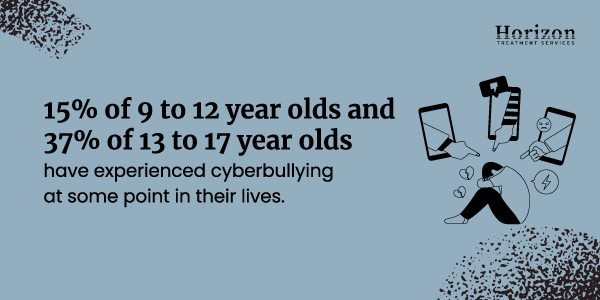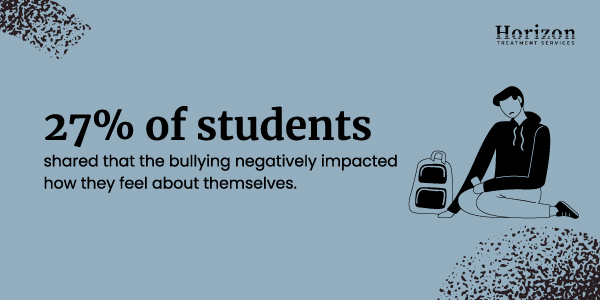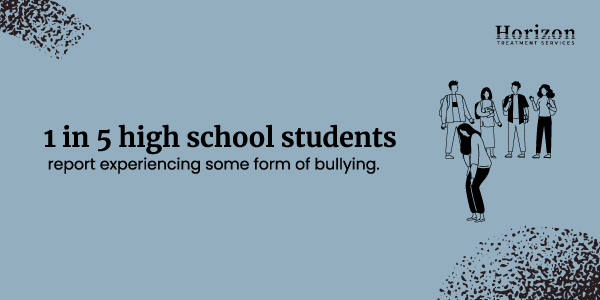Bullying is repeated patterns of unwanted and harmful behavior that involves deliberately harming and humiliating others.
Bullying often involves a power imbalance, with the bully targeting someone who is perceived as smaller, weaker, and more vulnerable.2

We’re here to help you get better. Reach out and receive personalized guidance and support.
To put it simply, bullying is a type of physical or verbal abuse towards another individual or the use of manipulation or aggression used to control. Bullying prevention can start with understanding the reasons and motivation for the behavior.
This article will explore why people bully others, the different types of bullying, and the various bullying prevention strategies you can use to keep yourself and others safe.
There is no one reason or factor that determines why people bully. But there are several possible factors that might contribute to why someone engages in bullying behavior.
Understanding these factors might help you develop a bullying prevention strategy. Some of the common reasons for bullying are detailed below.
This may be one of the most significant factors in bullying behavior.
In fact, studies show that a parent or someone in a child’s household has either physically, mentally, or sexually abused 60% of those who bully. Bullying may be a way that the individual is processing the abuse.3
Feelings of insecurity or lack of self-esteem are also significant underlying factors that contribute to bullying.
People may engage in abusive and harmful behavior to feel a sense of control and power. They decide to pick on someone else in order to feel better about themselves.
Peer pressure may play a role in the behavior of a bully. The pressure of wanting to fit in and be accepted can lead to harmful behavior.
Peer pressure is typically seen as a problem for kids and adolescents, but anyone at any age can be susceptible to peer pressure.
Not all people who have a mental health condition or personality disorder will bully, and not all bullies have mental health or personality disorders.
However, there are some mental health conditions that may contribute more to bullying behavior. These could include narcissistic personality disorder and antisocial personality disorder.
Personality disorders may lead to bullying behavior due to:4
There are many different types of bullying that can occur. Some types are more obvious than others. Understanding the type of bullying that’s happening will determine the type of bullying prevention needed.
There are six categories that bullying behavior may fall into, all of which are detailed below.
Verbal bullying involves using spoken or written words to insult or victimize another person. This type of behavior can be difficult to spot as it is typically done when no authority figure is around.
This type of bullying can often be overlooked as teasing among friends, making it difficult to combat.7
Cyberbullying happens online or via electronic devices. With the increase in electronic devices and social media, cyberbullying has become much more common. It’s also difficult to prevent since it can be done from anywhere.
Cyberbullying can occur through:8


Bullying has negative effects on both the person who is bullied and the person who is bullying. Bullying behavior has been linked to negative impacts on mental health, substance use disorder (SUD), and suicide.
Bullying prevention is important because of how the behaviors negatively impact everyone, directly or indirectly.
This abusive type of behavior can have long-term effects on everyone who is involved. In fact, bullying is considered an Adverse Childhood Experience (ACE) that may lead to trauma.
People who report experiencing more ACEs are more likely to experience mental health issues and trauma. Studies have also shown that children who experience more ACEs are also more likely to exhibit bullying behavior.16

One of the first steps to bullying prevention is to understand why someone may engage in that type of behavior. From there, a way to prevent bullying is to put systems and education in place to address these root causes.
This could look like:
Another way to establish bullying prevention strategies is to equip those who are being bullied with the skills and confidence to communicate and stand up for themselves.
It is important to help people identify what bullying behavior looks like. Since some forms of bullying may not be as obvious, some people, especially younger children, may find it difficult to identify.
Since bullying occurs most commonly in children and adolescents, many prevention strategies are aimed at early prevention. However, adults can also experience bullying, most commonly in the workplace.
Some ways to address or prevent workplace bullying include:
Schools and companies play an important role in the well-being and safety of their students or employees.
That is why it is important to establish safety measures for individuals to communicate about instances of bullying or harassment.

At Horizon Treatment Services, we are wholly committed to keeping our community safe and enabling our youth to develop into the strong, independent, healthy, and fulfilled adults that we know they are capable of becoming.
We believe in the power of community education and outreach – something that is near and dear to us with our Project Eden adolescent prevention and outpatient services.
Adverse Childhood Experiences (ACEs) can have detrimental impacts on adolescents well into their adulthood.
ACEs can include mental and physical trauma – such as bullying – and can greatly increase the risk of substance misuse throughout their lives. We believe that with proper bullying prevention strategies, we can help combat this growing issue.17
If you or a loved one are experiencing bullying, or are interested in being part of the positive change inevitably set about by bullying prevention strategies, Horizon Treatment Services is here to help educate and strengthen our local communities.
Fill out our quick contact form here or call us today at 510.582.2100. We are so excited to hear from you.
1https://www.cdc.gov/violenceprevention/youthviolence/bullyingresearch/fastfact.html
2 https://www.psychologytoday.com/us/basics/bullying
3https://www.betterhelp.com/advice/trauma/the-truth-about-why-do-bullies-bully/
5 https://www.stopbullying.gov/bullying/what-is-bullying
6 https://www.mdpi.com/1660-4601/10/12/6820
7 https://www.verywellmind.com/what-are-the-different-types-of-bullying-5207717
8 https://www.stopbullying.gov/cyberbullying/what-is-it
9 https://cyberbullying.org/2019-cyberbullying-data
10 https://onlinelibrary.wiley.com/doi/10.1002/ab.21433
11 https://stopstreetharassment.org/our-work/nationalstudy/
12 https://www.stopbullying.gov/bullying/roles-kids-play
13 https://nces.ed.gov/pubs2019/2019054.pdf
14 https://www.stopbullying.gov/bullying/effects
15 https://www.verywellmind.com/why-do-people-bully-5187244#citation-3
16 https://www.nctsn.org/what-is-child-trauma/trauma-types/bullying/effects
17 https://developingchild.harvard.edu/resources/aces-and-toxic-stress-frequently-asked-questions/